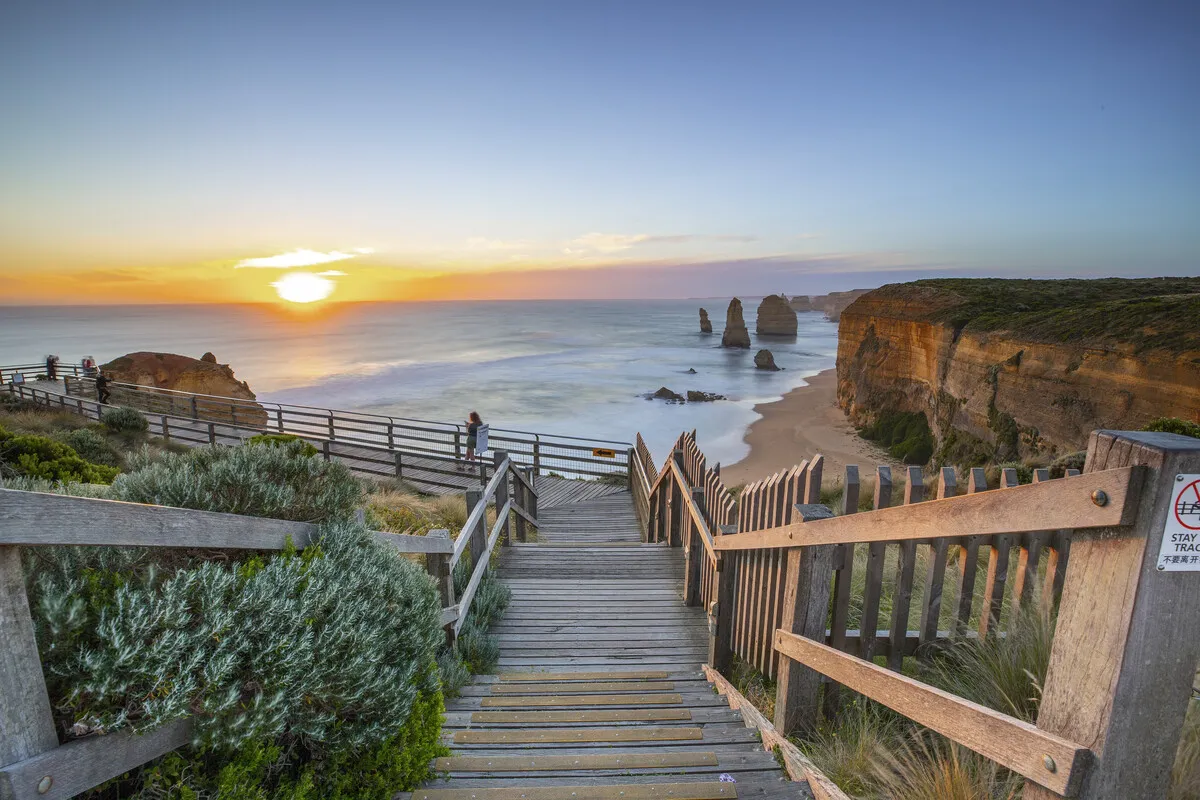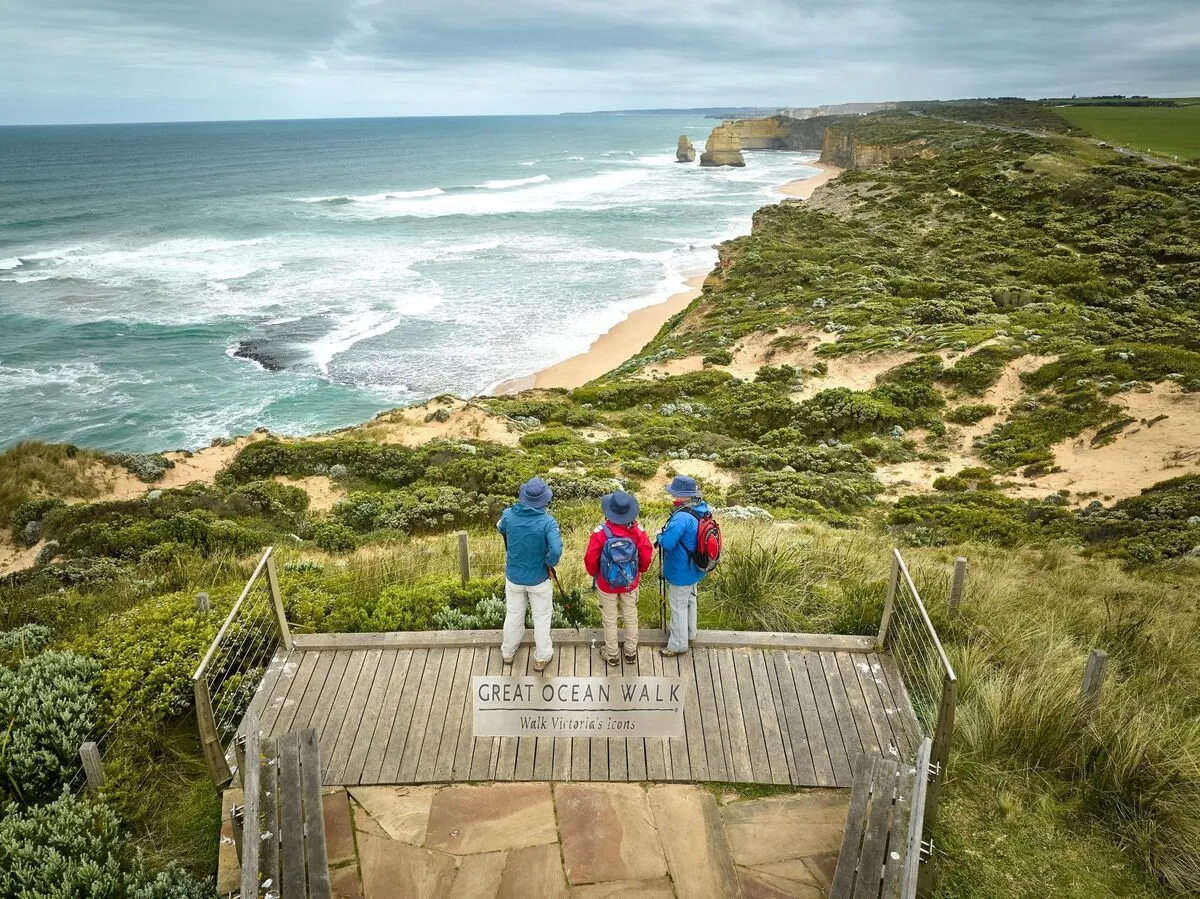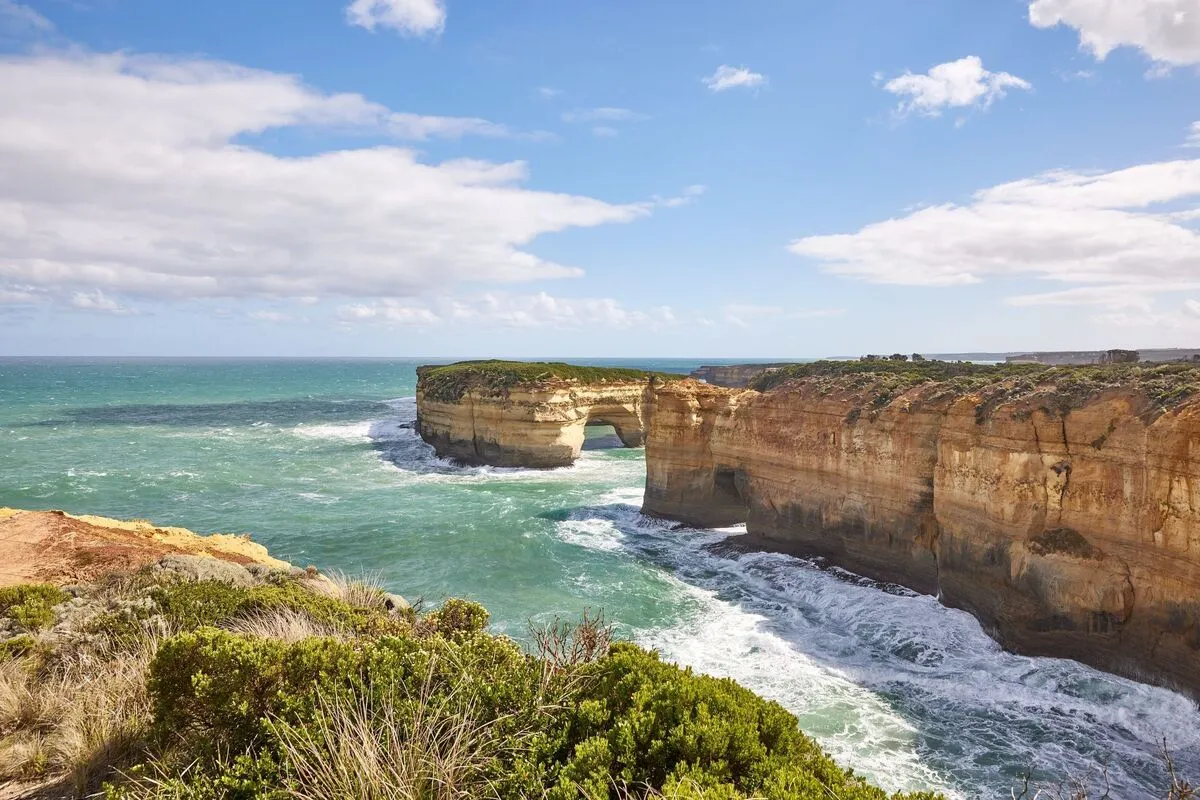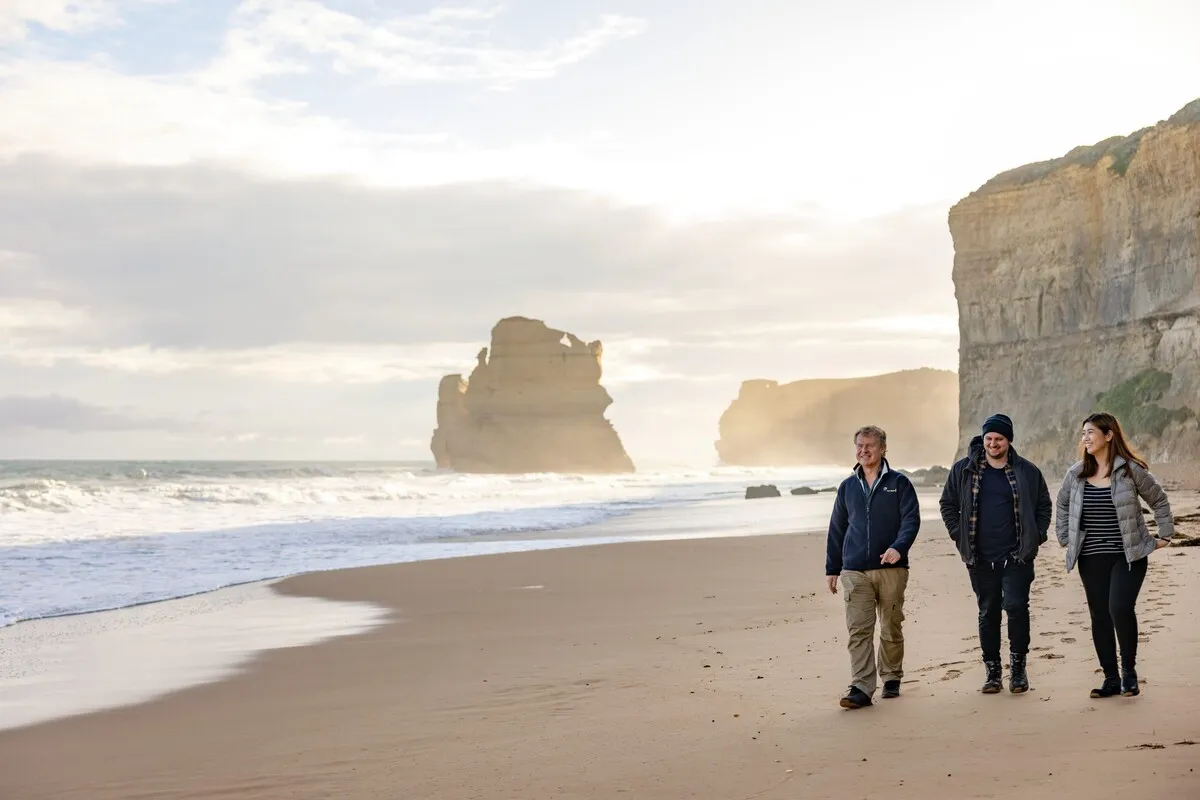During the summer months, Great Ocean Road typically experiences an increase in visitor numbers. However, a journey in the spring or fall is less busy, and winter is full of natural appeal. Read on to learn about the best time to explore the Great Ocean Road with its breathtaking views.
Australia is a vast country, and the differences between latitude and longitude mean that weather forecasts across the country can change dramatically. The weather on the Great Ocean Road also varies from destination to destination. For those lucky enough to travel the 243 kilometres from Torquay to Allansford, deciding which season is best for a trip is often tricky.
Many travellers plan their Great Ocean Road tours based on seasonal highlights, whether it’s spotting migrating whales in winter or enjoying sunny beach days in summer


Choosing the best time to visit Australia’s Great Ocean Road can be challenging, as there is so much to see and do throughout the year. For many travellers, the summer months of December to February are attractive due to the predicted warm weather and warmer-than-normal ocean average temperatures. However, there are certain advantages to choosing various times of the year.
The spring months, from September to November, are a fantastic time to visit the Great Ocean Road as the weather has not yet peaked but is already starting to warm up. Flowers are blooming, the Australian tourist season is beginning, and the days are getting longer. While the Great Ocean Road is an unforgettable journey at any time of year, spring is undoubtedly one of the best times to visit.
With fewer crowds, more (cheaper) accommodation options and plenty of activities for those who want to travel in peace and enjoy the experience without the forecast of bad weather, the Great Ocean Road in spring is an attractive choice with incredible views.

Hiking and mountain biking – There are many options, with numerous hiking trails in Otway National Park and many cycling routes, such as the famous Old Beechy Rail Trail (suitable for runners).
Admire the wildflowers; whether or not you are a plant lover, we can all appreciate lovely and vibrant blooms. The Tower Hill Wildlife Sanctuary is a great place to start, or you can take a stroll through the Bay Area Coastal Park to admire the breathtaking scenery.
Festivals—Several festivals happen during this time, such as the Lorne Performing Arts Festival, Port Fairy Spring Music Festival, and Otway Oktoberfest.
Enjoy the waterfalls – it rains throughout the winter, and the waterfalls are at their peak.
Although spring is suitable for those who want to be active without the heat and humidity, the average temperature is not warm enough to lie on the beach, enjoy the Apollo Bay climate and work on your tan. Those who want to swim in the waterfalls or the sea may find the weather on the Great Ocean Road too incredible during these months.

Summer in Australia lasts from December to February, with warm temperatures on the Great Ocean Road ranging from 25 to 30 degrees during peak season. With stunning sea views as far as the eye can see and the sun shining down on the ocean, it’s no wonder this is the busiest season.
Visit the lush rainforest – with its dense, leafy vegetation, a walk can offer respite from the intense sun. Those looking for a longer walk should visit Phantom Falls and Henderson Falls near Lorne.
Camping in the woods and on the sandy beach – enjoy the warm evenings and meet other travellers by camping at one of the many campsites along the Great Ocean Road. Some places, such as Blanket Bay, are trendy, especially during school holidays, so book online in advance.
Native Wildlife spotting—You can see animals in their natural habitat all year round, but it’s a real treat on hot summer days. Try booking a trip to Anglesea Golf Course and watching the kangaroos that live there.
Relax on the stunning beach – it may sound obvious, but with all the rainforests and bushwalks, spending extra time on the beautiful beaches and ocean along the incredible coastline is a must. No trip to Australia is complete without it! Weather conditions might vary over the Great Ocean Road’s huge length. For example, in Apollo Bay in February, the temperature is forecast to be around 22 degrees Celsius.
Although there is plenty to do during the peak of summer, don’t forget that hotel bookings will increase, and millions of Australian and international holidaymakers will flock to the famous tourist destinations with their coastal views!
There are many fantastic reasons to visit Australia during the summer holidays, but this may not be the best season for those looking for peace and quietest time to reflect on nature.
The cooler weather on the Great Ocean Road during the autumn months (March-May) is one of the best times to visit the region. The summer heat is gradually disappearing, and the forecast predicts warmer weather. There’s still enough to see and do, and when the crowds thin away, visitors can enjoy the Great Ocean Road at their leisure and with more alternatives.
Here’s what you can do in autumn:
Attend a festival with numerous fascinating events from April to the end of May, including the Rip Curl Pro, the Otway Film Fest, and the Warrnambool May Racing Carnival.
Visit the 12 Apostles – while beautiful all year round, enjoy the breathtaking rock formations without the crowds.

Ride the Otway Trail, which includes wineries, breweries, eateries, and cafés. This journey provides a wonderful flavour of culture. It’s easier to find a table this time of year, so be prepared to spend a lot of time reviving your taste buds!
Enjoy the colours – in autumn, the landscape turns beautiful shades of warm browns and gold, making it the perfect time to visit the Great Ocean Road.
Watch the whales return—Logan’s Beach Lookout at Warrnambool is a great place to watch whales return to the Victorian coast.
One disadvantage of travelling during the fall season is the lower ocean water temperature and higher probability of rain.
However, this does not deter surfers and swimmers! The variable weather forecast along the Great Ocean Road can change dramatically and abruptly, ranging from heavy rain to partly cloudy and bright.
Travelling the Great Ocean Road in winter can be an excellent option to escape the heat and crowds. During the off-season, the coastal roads are much more deserted, and there is a more excellent choice of hotels and discounts during off-peak periods.

Photography – enjoy the soft lighting and spectacular sunsets without crowds blocking your spectacular view.
Hiking—Without the heat and humidity, the winter months’ climate can be refreshing and invigorating for hiking.
Waterfalls– despite the increase in rainfall, waterfalls are still full and can be admired at their best.
Whale watching: These majestic creatures may still be spotted moving along the Great Ocean Road’s shore.
The disadvantage of winter travel is that the weather forecast on the Great Ocean Road does not allow swimming in the ocean, and there is always a risk of heavy rain, especially if you visit the Great Otway National Park. Although the experience will be pleasant, bringing a mackintosh and waterproof shoes is worth it!
If you want to avoid the crowds, take photos that don’t include other people taking selfies. If you wish to travel alone, the ideal time to explore the Great Ocean Road is between October and November, or February and March. There is an ideal time to slowly explore the gorgeous spots along the Great Ocean Road during favourable weather and lower costs for hotels, air transport, and vehicle rentals.
During these months, you may enjoy cool sea breezes, comfortable temperatures, and mild weather. Although the risk of rain is slightly higher than in the summer, this is due to the lush flora and numerous waterfalls.
Finally, the Great Ocean Road is a must-see for anyone visiting Australia and is stunning year-round. The various weather conditions accompany each season, enhancing the coastal road trips with breathtaking views.

The summer months (December–February) are the busiest, with warm temperatures around 25–30°C, perfect for beach days and outdoor activities. Expect higher accommodation prices and larger crowds during this period.
Yes — September to November offers mild weather, blooming wildflowers, fewer crowds, and more affordable stays. It’s ideal for hiking, cycling, and enjoying waterfalls at their peak, though the sea may still be too cool for swimming.
From March to May, the weather is still pleasant, crowds are thinner, and you can enjoy local festivals, winery trails, and whale spotting at Logan’s Beach. Ocean temperatures drop, but the coastal scenery turns golden and rich in colour.
Absolutely. June to August brings quiet roads, cheaper rates, and great opportunities for photography, hiking, and whale watching. Just pack for rain and cooler days, as swimming is generally off the cards.
Late spring (October–November) and late summer to early autumn (February–March) offer a sweet spot — mild temperatures, manageable rainfall, and smaller crowds, making it easier to explore the coastline at a relaxed pace.